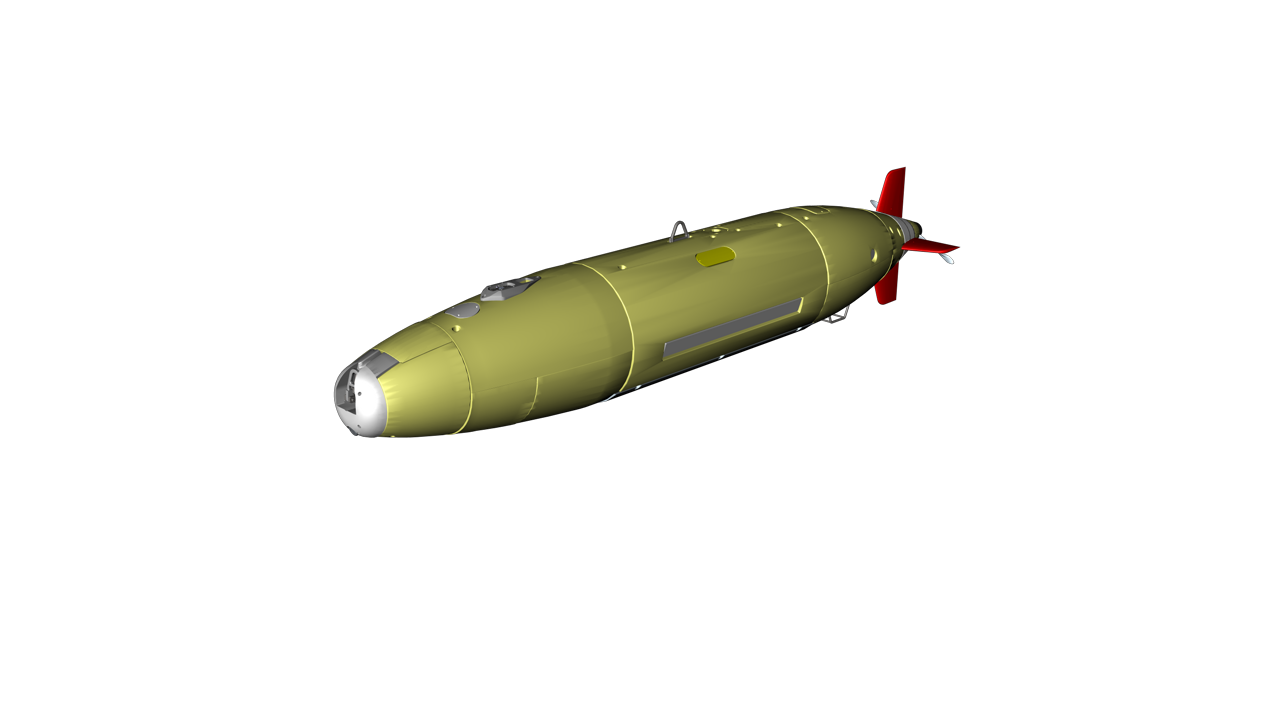

Large scale survey is conducted using sidescan sonar as the primary sensor, followed by a small area survey using high resolution cameras for positive target identification. (Animation by Tim Silva, Woods Hole Oceanographic Institution)
REMUS vehicles overview. (Edited by Tim Silva, Woods Hole Oceanographic Institution)
Remote Environmental Monitoring UnitS, or REMUS vehicles, are low-cost autonomous underwater vehicles (AUVs) designed by WHOI's Oceanographic Systems Lab to operate in the field with a simple laptop computer. Initially developed for coastal monitoring, these torpedo-shaped vehicles are now used to carry a variety of instruments up to 6,000 meters (nearly 20,000 feet) depth. REMUS vehicles are particularly well suited for surveying, measuring, and mapping over wide areas of the water column or ocean floor.
| Length | 3.84m (12.6 ft.) |
| Diameter | 19cm (7.5 ft.) |
| Weight | 37kg (80 lbs.) |
| Maximum Depth | 100m (330 ft.) |
| Endurance | Up to 22 hours |
| Velocity | Up to 2.6 m/s (5 kts.) |
| Length | 3.84m (12.6 ft.) |
| Diameter | 71cm (28 in.) |
| Weight | 862kg (1,900 lbs.) |
| Maximum Depth | 6000m (19,685 ft./3.7 miles) |
| Endurance | Up to 22 hours |
| Velocity | Up to 2.6m/s (5 kts.) |